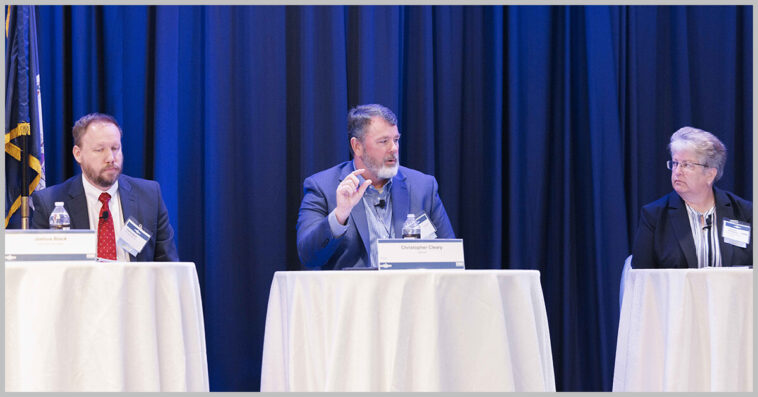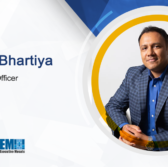Artificial intelligence is the type of game-changing technology that shakes up industries and reframes outlooks. Bill Geimer, vice president of cybersecurity solutions at ECS, echoes the common knowledge when he says that organizations need quality data before they can layer AI components into their systems. But he also identifies what he calls the “Catch-22” of AI tools, especially when being used in collaboration with government clients: “The tools need to learn from outside data, they need to learn from your data. And you can’t let that get outside.”
Geimer moderated a panel discussion about AI and data analytics at the Potomac Officers Club’s 2024 Cyber Summit on Thursday. Joining him were government officials like Roselyn Richardson of the Air Force Research Laboratory and Joshua Black of the Department of Defense Cyber Crime Center, as well as Christopher Cleary, a former Navy Department chief information security officer who now works for ManTech.
Potomac Officers Club events are ideal spaces for private-public collaboration between the two sides of the government contracting equation. Don’t miss POC’s next big gathering: the 2024 Army Summit. On Thursday, June 13, some of the Army’s most knowledgeable and influential leaders — like Hon. Doug Bush, Young Bang and new CIO Leonel Garciga — will take the stage. Participate in this enlightening networking opportunity!

Cleary highlighted another way that AI has turned the GovCon landscape on its head: more than other technologies, it has somewhat incapacitated the senior workforce and placed knowledge and thus power in the hands of younger employees and military personnel who are “digital natives” and more inherently understand technology like large language models and generative AI.
The ManTech vice president recalled an instance in his Navy days when he was part of a coalition called upon by U.S. Cyber Command to determine “what the reserve element should do to support [them].” He said the team of about 10 individuals hatched an early version of the “hunt forward” idea, which, according to CYBERCOM, works to “observe and identify malicious activity that threatens [multiple] nations, and use those insights to bolster homeland defense and increase the resiliency of critical networks to shared cyber threats.”
Cleary said that then-Col. Paul Nakasone was comfortable with the idea, whereas Gen. Keith Alexander, the more senior official, was not. Later, when Nakasone had risen to the rank of general and was leading CYBERCOM, the practice was implemented, going to show that younger folks often have the more forward-thinking ideas, that will inevitably be codified and made common practice when they are in charge one day.
“You may be the smartest person in the room. Hold that. Believe that,” Cleary asserted, speaking directly to a young Air Force cadet in the audience.
Answering another audience question about the potential threats of AI, Cleary said that with regard to adversaries’ improper and offensive usage of the technology, “it’s not an ‘if’ question, it’s a ‘when’ question,” and that examples like deep fakes are evidence that such misuse is already happening.





